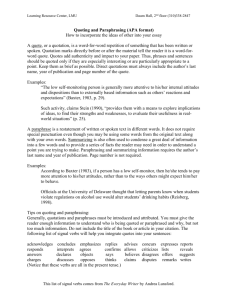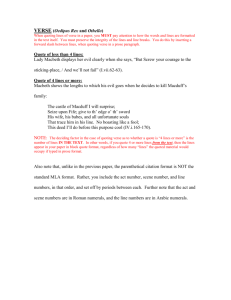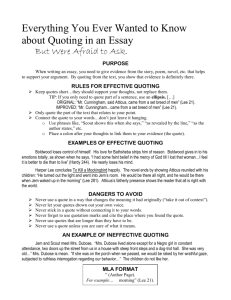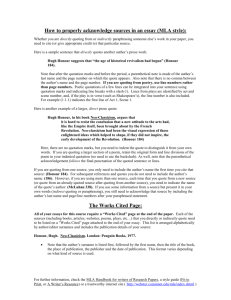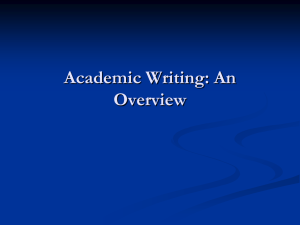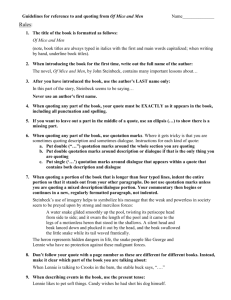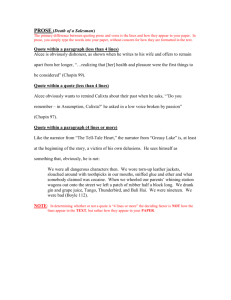2. They Say-I Say, Chap. 3
advertisement
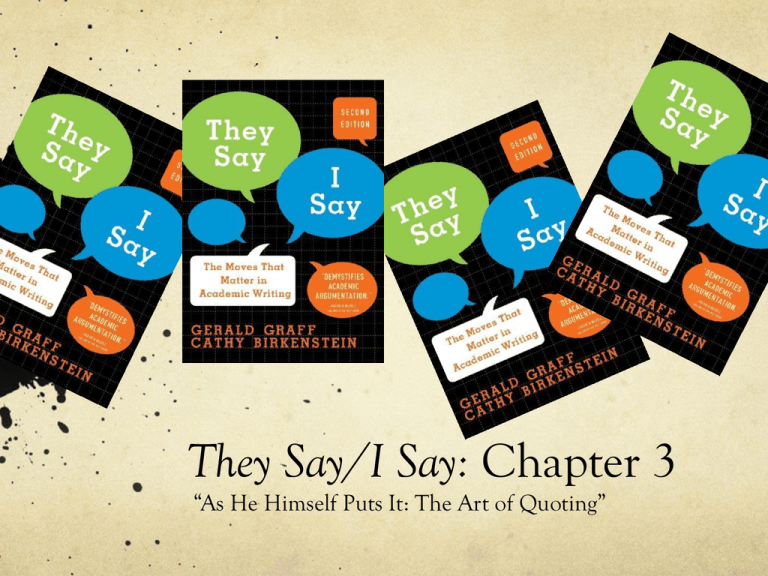
They Say/I Say: Chapter 3 “As He Himself Puts It: The Art of Quoting” Quoting = Credibility “Quoting someone else’s words gives a tremendous amount of credibility to your summary and helps ensure that it is fair and accurate. In a sense, then, quotations function as a kind of evidence, saying to readers: ‘Look, I’m not making this up. She makes this claim and here it is in her exact words.’” (39) Major pitfall: Most writers quote too little! Hard work to find the right quote Takes good record-keeping Uncertainty about citation conventions Other Pitfalls: Quoting too much Lack of confidence can summarize properly Use as filler Don’t assume quotes can speak for themselves! Quotations as “orphans” Have been torn from original context Need to be integrated into new surroundings Quoting what “they say” MUST be connected to what “you say”! Quote only RELEVANT passages Make sure the quotation serves a purpose within your paper—not just to show you’ve read the source! Sometimes quote is SO GOOD, write part of paper so can include it Make relevance clear by FRAMING quotations Avoid “dangling” quotations Watch out for “hit and runs” QUOTATION SANDWICH All quotes need a lead-in and a follow-up. INTRODUCE QUOTE QUOTE EXPLAIN QUOTE By using framing, you blend the author’s words with your own. Framing (lead-ins + follow-ups) helps you integrate the quote into your text, creating a hybrid blend. Blending gives the quote the spin you want— emphasizing certain aspects without misrepresenting the text you are quoting. The longer and more complex the quote, the more framing you need.

